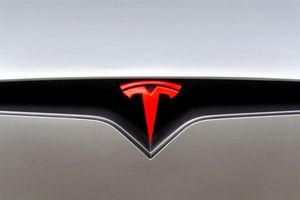
Nvidia (NASDAQ: NVDA) has once again demonstrated its unparalleled strength in the artificial intelligence (AI) landscape, delivering a robust earnings report that has sent positive shockwaves through the tech sector and reignited the broader stock market rally. The semiconductor giant's exceptional performance, particularly driven by its dominant position in AI accelerators and data center solutions, underscores the relentless demand for advanced computing power fueling the global AI revolution. This stellar report is not just a testament to Nvidia's operational excellence but also serves as a critical barometer for the health and growth trajectory of the entire AI ecosystem, prompting investors to re-evaluate opportunities across related industries.
The company's sustained momentum confirms that the AI boom is far from a speculative bubble, representing a fundamental industrial transformation that is reshaping global technology infrastructure. As of November 20, 2025, Nvidia's financial results and optimistic future guidance have instilled renewed confidence, reinforcing the narrative that AI-driven innovation will continue to be a primary catalyst for market expansion and technological advancement in the foreseeable future.
Unpacking Nvidia's Record-Breaking Performance
Nvidia's latest earnings report for Q3 Fiscal Year 2026 has delivered a powerful message to the market, showcasing record-breaking financial performance that comfortably exceeded Wall Street's already elevated expectations. The company reported a staggering total revenue of approximately $57 billion, marking a significant 62% year-over-year increase. Adjusted earnings per share (EPS) came in at $1.30, surpassing forecasts and underscoring robust profitability with GAAP gross margins at an impressive 73.4%.
The primary engine behind this stellar growth remains Nvidia's Data Center segment, which generated an astounding $51.2 billion in revenue—a remarkable 66% year-over-year increase and a 25% sequential rise. This segment alone accounted for nearly 90% of Nvidia's total revenue, highlighting its pivotal role in the global AI infrastructure build-out. The insatiable demand for Nvidia's AI GPUs, including its next-generation Blackwell series and the anticipated Rubin series, continues to drive sales, with CEO Jensen Huang noting demand as "off the charts." Major hyperscale and cloud service providers such as Amazon (NASDAQ: AMZN), Microsoft (NASDAQ: MSFT), Alphabet's Google Cloud (NASDAQ: GOOGL), Oracle Cloud Infrastructure (NYSE: ORCL), and specialized AI cloud providers like CoreWeave, are ramping up capital expenditures significantly to acquire Nvidia's cutting-edge chips.
Beyond the core GPU sales, Nvidia's data center networking business also experienced exceptional growth, with revenue reaching $8.2 billion in the October quarter, a 162% increase year-over-year. This expansion into comprehensive data center solutions, coupled with strong contributions from the Automotive and Professional Visualization segments, paints a picture of a diversified yet AI-centric growth strategy. The positive sentiment extended to the Gaming segment, which also saw a notable 30% year-over-year revenue increase, further bolstering the overall strong report.
The market's reaction was immediate and overwhelmingly positive. Nvidia's stock experienced a significant surge, rising between 2.85% and over 8% in after-hours trading, adding hundreds of billions to its market capitalization. This rally extended to other AI and semiconductor stocks, including Advanced Micro Devices (NASDAQ: AMD) and Taiwan Semiconductor Manufacturing Company (NYSE: TSM), contributing to broader gains in major market indices. Financial analysts largely reiterated "Strong Buy" ratings and raised price targets, dismissing recent "AI bubble" concerns due to Nvidia's sustained growth and robust product roadmap. Key stakeholders benefiting from this performance include major institutional investors like Vanguard Group and BlackRock Inc. (NYSE: BLK), as well as Nvidia's management and its founder, Jensen Huang.
Winners and Losers in Nvidia's Wake
Nvidia's continued dominance in the AI market is creating a clear delineation of winners and those facing significant challenges across the technology landscape. The sheer scale of investment in AI infrastructure, spearheaded by Nvidia's chips, is fundamentally reshaping competitive dynamics.
The Winners:
- Hyperscale Cloud Service Providers: Tech giants like Amazon (NASDAQ: AMZN) with AWS, Microsoft (NASDAQ: MSFT) with Azure, and Alphabet (NASDAQ: GOOGL) with Google Cloud Platform are Nvidia's largest customers. Their massive capital expenditures on Nvidia's Blackwell, GB200, and upcoming Rubin chips enable them to offer powerful AI-as-a-service solutions, attracting enterprise clients and cementing their competitive advantage in the cloud. Meta Platforms (NASDAQ: META) is also a significant beneficiary, investing heavily in Nvidia's hardware for its AI research and development.
- AI Cloud Computing Providers (Neo-clouds): Specialized GPU-as-a-service companies such as CoreWeave and Lambda are thriving. They provide access to Nvidia's powerful GPUs to a broader market, catering to developers and enterprises that may not have the resources or direct access to acquire Nvidia's hardware themselves. Nvidia's own partnerships with these providers, through initiatives like DGX Cloud Lepton, further support their growth.
- Nvidia's Supply Chain and Semiconductor Manufacturing Partners: Companies critical to the production of Nvidia's advanced chips are seeing immense benefits. Taiwan Semiconductor Manufacturing Company (NYSE: TSM) remains a crucial foundry partner, while Micron Technology (NASDAQ: MU) is experiencing record demand for its High-Bandwidth Memory (HBM), an essential component for AI GPUs. Equipment manufacturers like Lam Research (NASDAQ: LRCX) and advanced packaging specialists like Amkor Technology (NASDAQ: AMKR) also benefit from increased investment in chip production. Broadcom (NASDAQ: AVGO) and Marvell Technology (NASDAQ: MRVL), providers of high-speed interconnects and switches, are also riding the AI wave as data centers scale up.
- Data Center Infrastructure Providers: The build-out of AI-centric data centers is fueling demand for specialized infrastructure. Vertiv Holdings (NYSE: VRT) provides critical power and cooling solutions, essential for the high heat output of AI servers. Super Micro Computer (NASDAQ: SMCI) specializes in optimized server and rack solutions for GPUs, while Digital Realty (NYSE: DLR) benefits from increased data center leasing activity.
- AI Software and Application Developers: Companies like OpenAI, which are at the forefront of AI model development, are making massive investments in Nvidia chips. Access to more powerful compute resources allows for faster development cycles, more complex AI models, and the creation of innovative AI-powered products and services.
The Challengers/Those Facing Pressure:
- Direct Competitors in AI Chips: While making strides, companies like Intel (NASDAQ: INTC) with its Gaudi 3 AI accelerator and Advanced Micro Devices (NASDAQ: AMD) with its Instinct MI300X chip face an uphill battle against Nvidia's entrenched market share and comprehensive CUDA software ecosystem. Despite securing significant orders, they still hold a fraction of Nvidia's market share in the critical AI training segment.
- In-house Chip Developers: While still major Nvidia customers, tech giants like Google, Amazon, and Microsoft are actively developing their own custom AI hardware (e.g., Google's TPUs, Amazon's Trainium/Inferentia, Microsoft's Maia) to reduce dependency and optimize for specific workloads. This could pose a long-term challenge to Nvidia's market share, particularly in the inference segment.
- Smaller, Undifferentiated GPU-as-a-Service Providers: While some specialized "neoclouds" thrive, others may struggle to find customers due to the high cost of deploying and managing GPUs, especially as Nvidia rapidly introduces new generations of chips. They also face competition from larger cloud providers with established infrastructure.
- Companies Slow to Adopt AI: Businesses across various industries that are slow to invest in AI infrastructure and integrate AI into their operations risk being left behind. Competitors leveraging AI for enhanced efficiency and innovation could gain a significant competitive advantage, leading to market share loss for those resistant to the shift.
The Broader Significance: An Industrial Revolution
Nvidia's sustained strong earnings and unparalleled dominance are not isolated events; they are central to a profound, ongoing industrial revolution. This phenomenon extends far beyond the semiconductor industry, reshaping global technological trajectories and economic power structures.
Nvidia's performance is intrinsically linked to the explosive growth of the AI hardware market, which is projected to reach hundreds of billions of dollars in the coming years. This growth is driven by the increasing complexity of AI models and the insatiable demand for more powerful computational resources, leading to unprecedented expansion in data center and cloud computing infrastructure. The company's unique position is solidified by its proprietary CUDA software platform, which has created a powerful ecosystem and "moat" that is incredibly challenging for competitors to replicate, effectively locking in developers and applications to Nvidia's hardware.
The wider significance also lies in the evolving competitive landscape. While Nvidia maintains a near-monopoly in the high-margin AI training segment, the AI inference market is rapidly fragmenting, with Application-Specific Integrated Circuits (ASICs) gaining traction. This bifurcation suggests that while Nvidia dominates the foundational training of AI models, other specialized hardware solutions are emerging for deploying those models. Nvidia's role as a prominent member of the "Magnificent Seven" tech stocks further underscores the concentration of market power towards a few dominant technology giants, representing a substantial portion of the S&P 500's total value.
Regulatory and policy implications are also becoming increasingly prominent. U.S. export controls on advanced AI chips have significantly impacted Nvidia's ability to sell high-performance GPUs to China, leading to the development of "detuned" variants to comply with regulations. This geopolitical dynamic forces Nvidia to navigate a delicate balance between market access and national security concerns, while also potentially spurring domestic AI chip development in countries like China. Nvidia has also committed to a massive $500 billion investment plan to build domestic AI infrastructure in the U.S. over the next four years, addressing supply chain resilience and geopolitical pressures.
Historically, Nvidia's current trajectory draws parallels to past eras of technological dominance. Its CUDA platform evokes comparisons to Microsoft's (NASDAQ: MSFT) operating system hegemony in the 1990s, where a pervasive software standard created significant ecosystem lock-in. Similarly, Nvidia's near-monopoly in AI chips mirrors Intel's (NASDAQ: INTC) long-standing dominance in the CPU market. However, the AI landscape is arguably more complex, with hyperscalers developing custom solutions and regulatory hurdles adding new dimensions, making Nvidia's current position both powerful and uniquely challenging.
The Road Ahead: Navigating the AI Frontier
Looking ahead, the future for Nvidia and the broader AI market is characterized by continued aggressive growth, relentless innovation, and a dynamic competitive landscape. In the short term (late 2025-2026), Nvidia is poised to maintain its leadership with platforms like Blackwell Ultra and the upcoming Rubin architecture, which promise further leaps in AI semiconductor capabilities. The company is strategically expanding into "Reasoning AI" with open models like Llama Nemotron and "Physical AI" through platforms like Blackwell Ultra and Cosmos for robotics, aiming to capture emerging high-value segments of the AI market.
However, challenges persist. Intense competition from AMD (NASDAQ: AMD), Intel (NASDAQ: INTC), and emerging players, along with the in-house chip development efforts by hyperscalers, will continue to put pressure on Nvidia's market share. U.S. trade restrictions on advanced chip exports to China remain a significant headwind, necessitating strategic adaptations such as developing compliant chip variants. The concentration of demand among a few hyperscalers also presents a potential risk, pushing Nvidia to diversify its customer base and explore new revenue streams.
In the long term (2027 and beyond), Nvidia's strategic control over the advanced semiconductor manufacturing supply chain, including a dominant share of TSMC's (NYSE: TSM) advanced packaging capacity, will be crucial. The company is deepening its software ecosystem with CUDA, NIM, and NeMo microservices, aiming to create high switching costs and customer loyalty. Nvidia is also exploring "AI-as-a-Service" models and potentially building its own "AI cloud," signaling a strategic pivot to become a direct provider of AI computing infrastructure, which could disrupt traditional cloud giants.
The broader AI market is projected to reach astronomical valuations, driven by the widespread adoption of generative AI, advancements in edge computing, and increasing integration of AI into enterprise applications. The rise of agentic AI, which operates autonomously, represents a significant growth area where Nvidia's expertise in simulation and specialized hardware provides a unique advantage. While challenges like intensifying competition, geopolitical tensions, and supply chain dependencies remain, Nvidia's ability to consistently innovate and adapt its comprehensive strategy will be paramount in shaping its future and the broader AI landscape through 2030 and beyond.
Comprehensive Wrap-up: An Unstoppable Force
Nvidia's latest earnings report is a resounding affirmation of its indispensable role at the epicenter of the artificial intelligence revolution. The company's record-breaking revenue and astonishing growth in its Data Center segment underscore the insatiable global demand for AI compute power, with its advanced GPUs and comprehensive software ecosystem acting as the foundational pillars of this transformative era. Nvidia is not merely a chip vendor; it has evolved into the architect of the AI age, providing the essential infrastructure that powers everything from large language models to autonomous systems.
Moving forward, the market will continue to be heavily influenced by Nvidia's trajectory. The projected exponential growth in AI data center capital expenditures, coupled with the increasing adoption of AI across diverse industries, suggests a sustained and robust demand environment. While concerns about an "AI bubble" occasionally surface, Nvidia's leadership firmly believes that the current growth is driven by fundamental shifts towards accelerated computing, generative AI, and the emergence of agentic and physical AI, justifying the massive investments.
The lasting impact of Nvidia's dominance is profound. It has not only redefined the semiconductor industry but also propelled advancements in scientific research, professional visualization, and numerous other sectors. Its market capitalization milestones reflect a historic shift in technological power and investor confidence. However, the path ahead is not without its complexities. Intensifying competition from rivals like AMD (NASDAQ: AMD) and Intel (NASDAQ: INTC), coupled with the in-house chip development efforts of major cloud providers, will continue to challenge Nvidia's market share. Geopolitical tensions and supply chain resilience also remain critical factors to navigate.
Investors should closely monitor several key indicators in the coming months. Foremost among these is the continued growth in Nvidia's data center revenue, which will signal sustained demand for its AI accelerators. The successful ramp-up and adoption of its next-generation Blackwell and Rubin GPU platforms are crucial. Vigilance regarding competitive dynamics, potential supply chain bottlenecks, and broader AI capital expenditure trends will also be essential. Finally, while Nvidia's fundamentals are robust, the ongoing debate around its valuation and "AI bubble" concerns will likely contribute to market volatility, requiring investors to assess if earnings growth continues to justify the premium. Nvidia's journey at the forefront of AI is a powerful narrative, and its strategic maneuvers will undoubtedly shape the technological and financial landscape for years to come.
This content is intended for informational purposes only and is not financial advice


















